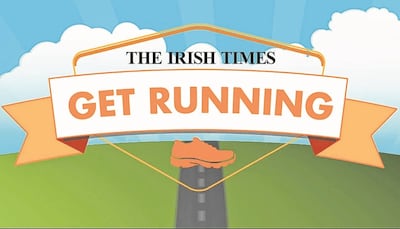Running a comfortable 5k is the goal and dream of many new runners this time of year.

Although it may seem a long way off right now, it won’t be long until runners will be crossing 5k finish lines with tears of joy and looks of disbelief. Being in the company of running “newbies” so often, I can truly say that there is no running buzz like that of your first 5k. If you are lucky enough to be on this running path, hang in there over these next few weeks, even the days you don’t feel that glorious runner’s high.
Your first 5k will make all the effort worthwhile.
The perfect distance
This wonderful 5k distance is not just reserved for beginners. For many runners, 5k is the perfect distance for midweek training and a weekend challenge. 5k is short enough to fit into a busy schedule but long enough to get a good dose of fresh air and those powerful feel-good running endorphins. Our speed over 5k is regularly used as a measure of our current running form. The finish line time tells a lot about the shape we are in. It is hard not to compare our pace over 5k with that of our previous performances. This can be motivating but not always helpful.
Race against the clock
Running a fast 5k is one marvellous way to challenge the mind, the legs and indeed the lungs. We just need to ensure that every time we go out the door our goal isn’t to strive for a time. Like someone on a weight loss journey who defines their success only by a number on the scales, we need to be careful to not always define our running success by the number on our watch at the end of our 5k.
Another way to 5k
A fast 5k every weekend or fortnight is plenty for any runner wishing to improve. This gives your body time to recover before the next time trial. If the only way you know how to run 5k is to run hard and strong, consider slowing down in order to speed up. On the other hand, if running fast too often is the least of your problems and you are stuck in a rut of the same comfortable pace, route and routine, changing up your 5k can do wonders to help your motivation and performance. Over the next few weeks, try and include some of the following training sessions instead of your “regular” midweek 5k and see how they make you feel.
Go the other way : The most simple way to change our running routine is simply to turn the other direction once you leave your front door. Reverse the route of your normal "loop". Depending on the hills on your path you may get a totally different workout and but even if it is totally flat you get plenty of distraction as you look at your neighbourhood in a different light.
Think Technique: Leave the watch and the ego at home, slow your pace and set yourself the goal to focus on one element of running technique that you know you would benefit from. It might be posture, arm movement, relaxed shoulders, nasal breathing or indeed a lower chin. Running is made up of a lot more than just leg power.
One slow one fast: Alternative slow and fast kilometres over your 5k run. Starting with a slow one you will time to warmup and indeed finish on a slow one. You will have 2 opportunities along the way to push the lungs and the legs, but also plenty of time for recovery. This is a great lesson in pacing as running fast and consistently for 1km takes practice. It is not a sprint but a chance to push bit faster than your regular pace and stay focussed in the interval you are in.
Start slow return faster: If the thought of speed training is enough to make you avoid it, consider a more comfortable approach. Run slowly away from home for 2.5km, check the clock, turn around and return home quicker than the outward journey. Some days you will fly along, others not so much, but the lure of the finish line will surely tow you home.
Run to the beat: Replace the running watch with a metronome or music at 175-180 beats-per-minute and see how it feels to run at this rhythm. Everytime you hear a beat let a leg leave the group imagining it float back behind you. Keep the pace very comfortable but notice how the shorter strides this beat encourages give you lighter steps and places less effort from the legs.
Try parkrun: There is nothing like a little peer pressure to help push you along when the going gets tough. After a few weeks of building variety into your running routine, head out, warmup for 1km and give parkrun all you have got. Notice how the weeks of adaptions to your training have made to your mental and physical and strength and enjoy that Saturday morning feel-good post 5k feeling. See parkrun.com
Keep the love: If 5k is your distance, keep the love of it by changing it up a bit. Whether you want to get faster, stronger, or indeed just keep on enjoying 5k, adding variety into your training will help you stay consistent, comfortable and indeed confident in your running. It sets a solid foundation for whatever direction your running path may follow in the future and it helps you measure your running success by more than just that 5k number on the clock.
Mary Jennings is founder and running coach with ForgetTheGym.ie. Her book, Get Running, published by Gill Books is out now.

Sign up for one of The Irish Times' Get Running programmes (it is free!).
First, pick the eight-week programme that suits you.
- Beginner Course: A course to take you from inactivity to running for 30 minutes.
- Stay On Track: For those who can squeeze in a run a few times a week.
- 10km Course: Designed for those who want to move up to the 10km mark.
Best of luck!















